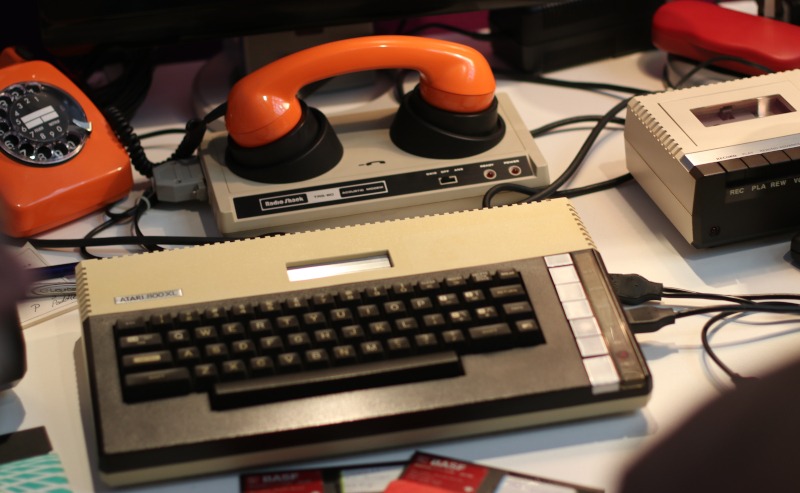What you need to know about the PSTN Switch-off
Table of Contents
1. What is the PSTN Switch-Off?
BT Openreach intends to turn off the old analogue phone system network known as PSTN (Public Switched Telephone Network), resulting in an all digital network. PSTN uses copper wires which BT Openreach wants to completely replace with fibre-optic cables. The PSTN switch-off will effectively mean all phone calls will need to be VoIP (Voice Over IP) calls. Business VoIP Phone Systems include 3CX and Wildix.
2. What internet services rely on PSTN?
In addition to the actual analogue phone network, there are a number of internet services that run on top of the PSTN which will be affected by the PSTN switch-off.
ISDN (Integrated Services Digital Network)
An old broadband technology that was quite popular for business communications, especially before the widespread adoption of broadband internet. ISDN allows the digital transmission of voice, video, data, and other network services over the traditional circuits of the public switched telephone network (PSTN). It could run at up to 64kbps per channel (similar to dial-up) and could have up to 30 channels (1.984Mbps).
ADSL (Asymmetric Digital Subscriber Line)
Uses copper telephone lines to provide internet access, common in many areas but being gradually phased out. Typical speeds ranged from 1Mbps up to 8Mbps.
ADSL2+
An improvement on ADSL, offering higher speeds. Typical speeds from 2Mpbs up to 24Mbps.
FTTC (Fibre to the Cabinet)
FTTC, also known as VDSL (Very-high-bit-rate Digital Subscriber Line) uses a combination of fibre optic cables to the street cabinet and copper wires to homes. Typical speeds from around 5Mbps up to 80Mbps.
G.Fast
An enhancement of the FTTC model that extends the capabilities of existing copper lines to provide much faster speeds over short distances. Only available within a short distance of the green cabinet. Typical speeds from around 100Mbps to 330Mbps, although could be up to 1Gbps (1000Mbps).
3. What may be using these PSTN-based services?
It’s not just analogue phone systems and general internet access that will be affected by the PSTN switch-off. There are still some products and services that may be using a PSTN dial-up service or using a PSTN-based broadband service that will stop working. This could include:-
- Alarm Systems
- Fax Machines (including multi-function printers)
- Card Machines (Dial-up POS)
- Digital Signage
- Self-Hosted Phone System
- ATM (Automated Teller Machines)
- Franking Machines
- Jukebox
4. When will the PSTN Switch-off take place?

The plan was to have fully migrated everyone to some form of digital only service before the 31st December 2025, so that the PSTN switch-off can take place on that date. However, there are concerns that an estimated 1.8million elderly and vulnerable people who rely on consumer telecare devices that will not be triggered if the internet goes down. This has led BT to announce in December 2023 that it will temporarily pause all non-voluntary, managed migrations until the concerns have been addressed, likely by SOTAP for Analogue. The switch over for all business customers is still scheduled to take place as planned.
Since September 2023, broadband and phone services that use the old copper network are no longer sold. This means that if you move property, you will be forced to use a digital only service.
UPDATE: On 16th May 2024 BT announced the PSTN switch-off will be delayed until 31st January 2027.
5. What are the Main Broadband Options?
Full Fibre (FTTP / FTTH / FTTB)
Full Fibre Broadband is also referred to as FTTP (Fibre to the Premises) for business and FTTH (Fibre to the Home) for residential. Provides an all-fibre connection directly to the home or business. FTTB (Fibre to the Building/Basement) is similar but the fibre terminates at the building rather than individual premises. Most basic plans offer a speed of at least 10Mbps with the best plans offering 1Gbps or more. In Eastbourne, BT Openreach, CityFibre and Lightning Fibre will be familiar names as they have been digging up roads and pavements over the last few years to supply full fibre broadband to homes and businesses in the area.
Cable Broadband
DOCSIS 3.0 and 3.1 (Data Over Cable Service Interface Specification) is the technology used by Cable TV networks (e.g. Virgin Media) to deliver high-speed broadband. Coaxial cables are used instead of copper wires. Typical speeds from around 20Mbps up to 10Gbps downstream and 1Gbps upstream in ideal conditions (DOCSIS 3.1).
Mobile Broadband (4G/5G/FWA)
Mobile broadband provides fast mobile data speeds over 4G LTE (typical speeds 5Mbps up to 150Mbps) and 5G (typically 50Gbps up to 10Gbps). FWA (Fixed Wireless Access) effectively uses the same technology but the SIM card is put into a mobile router instead of a mobile phone, and usually on a more data-friendly tariff. Typical speeds of 10Mbps up to 1Gbps. Mobile broadband is ideal for providing internet access at temporary locations or as a broadband back-up solution.
Leased Line
Dedicated fibre connections offering guaranteed speeds and uptime, suitable for larger businesses. Typical speeds of 10Mbps up to 10Gbps or more.
Satellite Broadband
Provides internet access via satellite, useful in rural areas where other forms of broadband are unavailable. Typical speeds from around 1Mbps to usually 25Mbps, but potentially up to 100Mbps.
6. Single Order Products
SOTAP (Single Order Transitional Access Product)
SOTAP provides broadband and IP voice servers over existing copper lines. It is intended as a transitional solution in areas where fibre services are not yet available, to allow the PSTN switch-off to take place on schedule. It appears there will be several variants of SOTAP, with SOTAP for Analogue starting trial on 1st May 2024 and specifically intended to address compatibility issues with personal alarms used by the estimated 1.8million elderly and vulnerable people mentioned earlier.
SOADSL (Single Order ADSL)
SOADSL provides a cost-effective and reliable broadband solution for business applications, with speeds up to 20Mbps for downloads and up to 2.5Mbps for uploads, which is suitable for VoIP and VPN usage. It is essentially ADSL without the landline service. Like SOTAP, it is intended as a stop-gap where fibre is unavailable, thus allowing the PSTN switch-off to take place on schedule.
SOGEA (Single Order Generic Ethernet Access)
Allows broadband without a traditional phone line, leveraging the existing copper line infrastructure. Typical speeds from around 10Mbps up to 80Mbps. This is essentially FTTC without the landline service.
SOGFast (Single Order G.Fast)
SOGFast offers higher speed broadband over a copper pair, with potential download speeds of up to 150Mbps or 300Mbps and upload speeds of up to 30Mbps or 50Mbps. It is targeted at areas with availability to next-generation ultrafast speeds over standard copper lines.
7. Comparison of Typical Speeds
Before comparing the speeds of these different technologies, we’ll briefly go through the terms used. Internet speed measurement is provided in bits per second as follows:-
| 1Kbps (Kilobits per second) | 1000bps (bits per second) |
| 1Mbps (Megabits per second) | 1000Kbps (Kilobits per second) |
| 1Gbps (Gigabits per second) | 1000Mbps (Megabits per second) |
A bit (binary digit) is the smallest unit which can be either 1 (one) or 0 (zero). Storage space and memory are measured in Bytes which consist of eight bits. This often causes confusion as to how long it will take to download a file. If you have an 10MB (MegaByte) file, it would take one second if the speed was 10MBps (MegaBytes per second). However, as transfer rate is measured in bits, it would actually take 8 seconds at 10Mbps (Megabits per second).
It should be noted that no speeds are guaranteed and will vary due to many different factors that affect the technology involved, such as distance from a cabinet (e.g. G.FAST), cell tower coverage (mobile broadband), weather conditions (satellite), throttling due to excessive use (mobile), and package that has been signed up for (FTTP).
| Technology | Typical Speeds |
| ISDN | 64Kbps per channel – up to 1.984 Mbps (30 channels) |
| ADSL | Between 1Mbps up to 8Mbps |
| ADSL2+ and SOADSL | Between 2Mbps up to 24Mbps |
| FTTC and SOGEA | Between 5Mbps up to 80Mbps |
| G.Fast and SOGFast | Between 100Mbps to 330Mbps, but up to 1Gbps (1000Mbps) |
| Full Fibre (FTTP et al) | 10Mbps (cheapest plans) to 1Gbps, but up to 10Gbps |
| Cable Broadband | 20Mbps, up to 10Gbps (downstream) and 1Gbps (upstream) |
| Leased Line | 10Mbps up to 10Gbps or more |
| 4G LTE Mobile Broadband | 5Mbps up to 150Mbps |
| 5G Mobile Broadband | 50Mbps to 1Gbps, but up to 10Gbps |
| Satellite Broadband | 1Mbps to 25Mbps, but up to 100Mbps |
8. Final Thoughts
The PSTN switch-off is coming. Line rental and broadband services like ADSL and FTTC are increasing in cost to encourage people to make the switch before it is forced upon them. The need for faster and more reliable internet connections is growing and full fibre is usually the answer for a number of reasons:-
- Working From Home: higher-quality video conferencing can help telecommuters feel more connected to their workplace.
- Higher Productivity: With faster upload and download speeds, businesses can operate more efficiently, and employees can complete online tasks quicker, without the frustration of slow connections.
- Improved Online Education: a stable internet connection is necessary for e-learning platforms, online courses, and educational resources, which is essential when learning online.
- Enhanced Security Systems: Full fibre supports more sophisticated home and business security systems, including high-definition security cameras and real-time monitoring.
- Reduced Latency: Full fibre networks have much lower latency compared to other broadband types, which is crucial for real-time applications and services.
- Scalability for Businesses: As businesses grow, full fibre can easily scale to meet increased demand for bandwidth without the need for extensive infrastructure changes.
Contact A1 IT Solutions now to find out what broadband technologies are available to you and which would be the most suitable for your needs.


